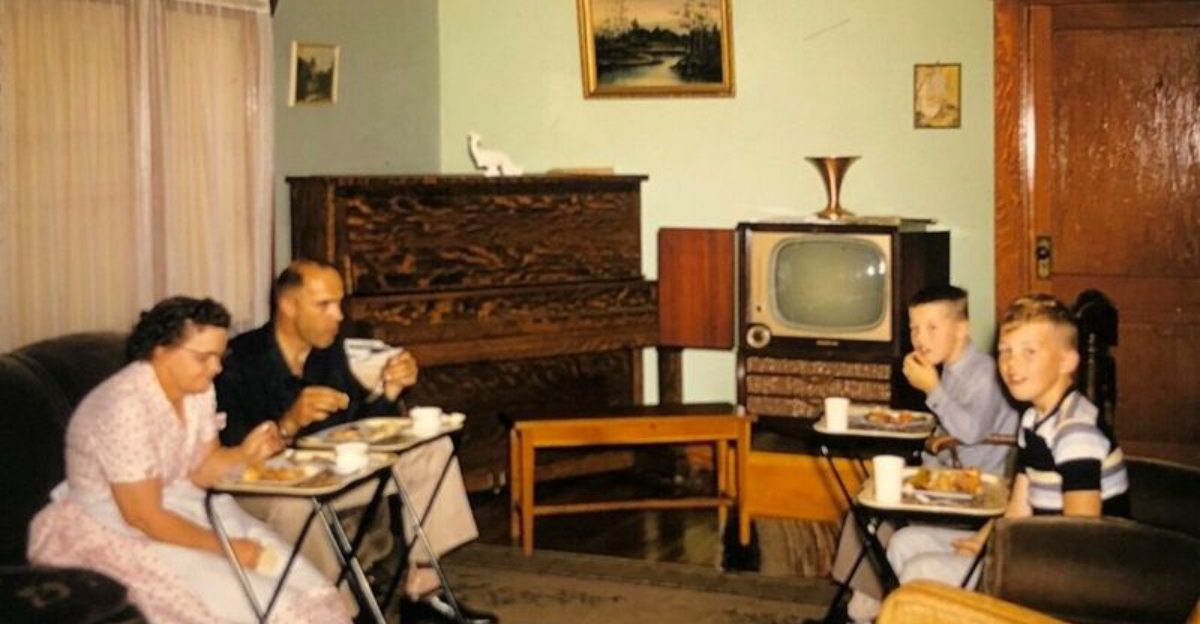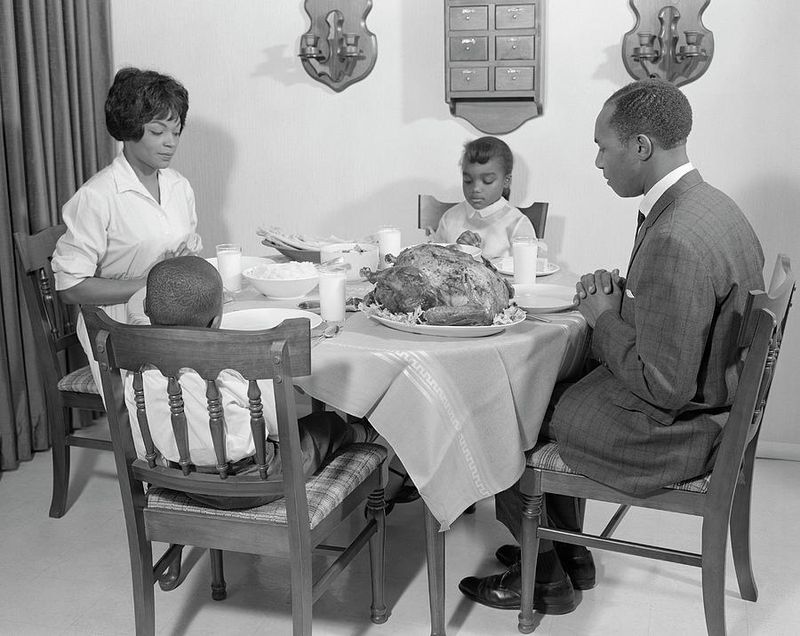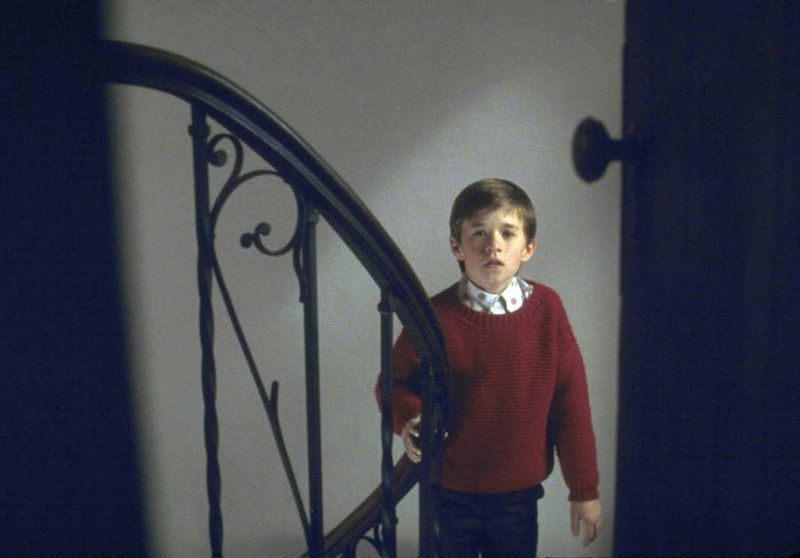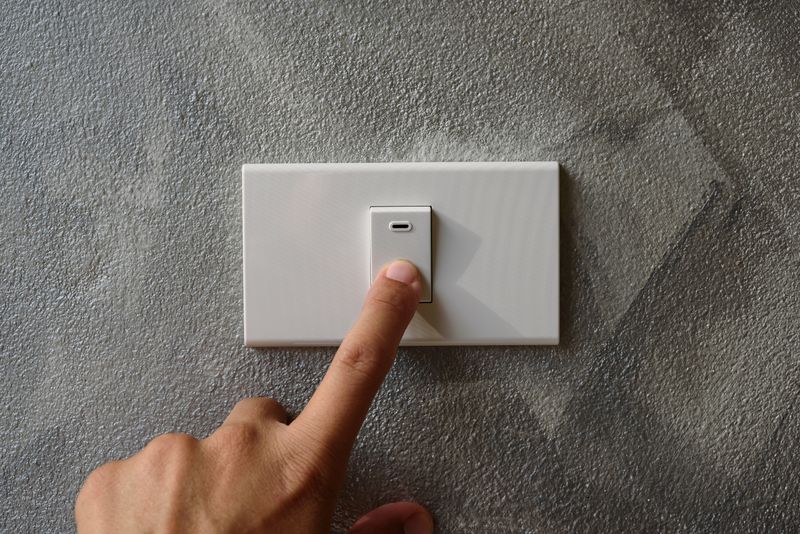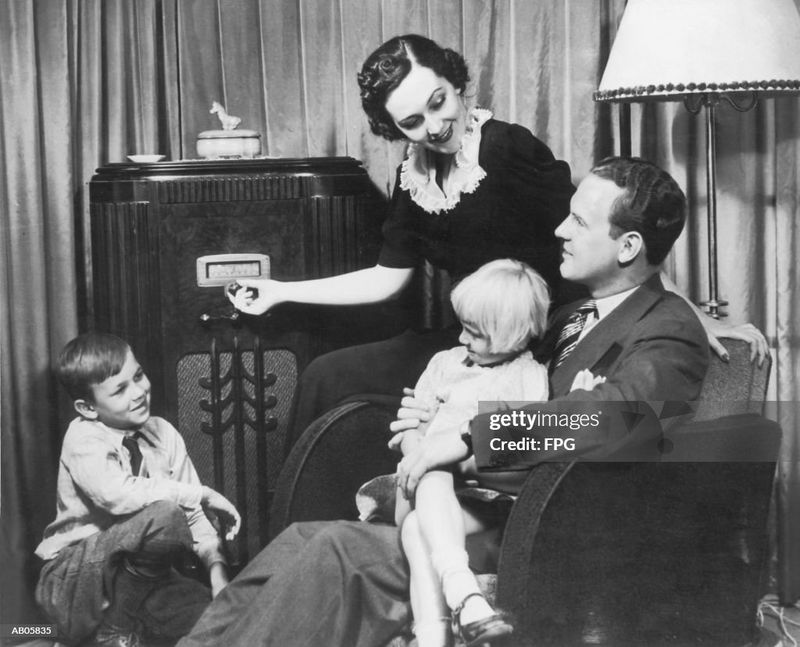We’ve all grown up with house rules that seemed straightforward but actually have surprising origins and meanings.
From dining etiquette to bedroom policies, these common household commandments aren’t always what they seem.
The real stories behind these everyday rules might change how you think about them – and maybe even how you run your own home.
1. Hats Off at the Dinner Table
That baseball cap you were scolded for wearing while eating? The rule dates back centuries to when removing headwear showed respect to hosts and deities. Knights would remove helmets to show peaceful intentions.
Modern families enforce this without knowing its religious and status-based history. It was less about being polite and more about showing submission and reverence.
Today, many families have relaxed this tradition, recognizing it as a cultural relic rather than an essential courtesy. Yet in formal settings, the old rule persists as a nod to tradition rather than necessity.
2. No Running Inside the House
Remember sprinting down hallways only to hear the inevitable parental warning? Before wall-to-wall carpeting became common, running on wooden floors caused serious damage to both the home and anyone living below you.
Homes with wooden joists would literally creak and bend under the impact of running feet. The vibrations could knock pictures off walls and disrupt everyone’s peace.
Parents weren’t just being killjoys – they were structural engineers protecting their investment! While safety concerns about breaking items or falling remain valid, the original rule was as much about preserving the actual house as protecting its contents.
3. Shoes Belong Outside
Kicking off shoes at the front door isn’t just about dirt. Many Asian cultures have practiced this for centuries as a spiritual boundary between the outside world and home sanctuary. The threshold represents more than just a physical entrance.
Science backs this tradition too. Studies show shoes track in pesticides, bacteria, and toxins from streets and public spaces. One study found the average shoe sole carries over 421,000 bacteria!
Western homes only recently adopted this practice widely. The custom balances practical cleanliness with deeper meaning about leaving outside troubles at the door – both literal dirt and metaphorical baggage.
4. Empty Your Plate Completely
“Think of the starving children!” This guilt-inducing directive emerged during the Great Depression and World War rationing when food scarcity was real. Parents who lived through genuine hunger passed down their anxieties about waste.
Ironically, this well-intentioned rule can promote unhealthy eating habits. Nutritionists now suggest teaching children to stop eating when satisfied, not when plates are clean.
Modern food psychology recognizes forcing children to finish everything can disconnect them from natural hunger cues. The better approach? Serve smaller portions initially and offer seconds if truly hungry. This preserves the value of not wasting food while respecting bodily wisdom.
5. Television-Free Mealtimes
When televisions first invaded American homes in the 1950s, parents scrambled to protect family dinner conversation from this hypnotic new intruder. The rule wasn’t about distraction – it was about preserving one of the last bastions of family connection.
Research confirms their instincts were right. Families who eat without screens have better communication and stronger bonds. Children develop better vocabulary and social skills through mealtime conversations.
The modern equivalent extends beyond TV to smartphones and tablets. The principle remains valid even as the technology changes – mealtime creates irreplaceable opportunities for connection that screens silently steal away.
6. Elbows Away From the Table Edge
Medieval dining tables were narrow planks balanced on trestles, where errant elbows could send everything tumbling! This practical concern evolved into a class marker – only the unrefined would risk disrupting the shared dining space.
The rule made perfect sense when diners sat shoulder-to-shoulder at crowded tables. Personal space simply didn’t exist in the same way.
Modern etiquette experts now distinguish between actively eating (when elbows should be off) and conversing between courses (when leaning on elbows is acceptable). The rule has evolved from preventing physical disasters to signaling attentiveness to companions rather than slumping over your plate.
7. Resolve Arguments Before Bedtime
“Never go to bed angry” sounds wise until you’re exhausted at 2 AM still trying to resolve a complex disagreement! This advice comes from biblical origins but contradicts what psychology now tells us about emotional processing.
Sleep actually helps reset emotional reactions. Your tired brain often makes conflicts worse, not better. Forcing resolution when exhausted can lead to saying things you’ll regret.
A better approach? Acknowledge the disagreement, commit to revisiting it when rested, and get some sleep. Many couples find morning brings perspective that midnight arguments lack. Sometimes the best conflict resolution tool isn’t more talking – it’s a good night’s sleep.
8. Knock First, Enter Second
Knocking wasn’t always standard practice! Historical homes often lacked privacy concepts we take for granted today. Children shared bedrooms, bathrooms were communal, and parents entered spaces freely as the undisputed rulers of their domain.
The shift toward knocking reflects evolving views on personal boundaries and individual rights within families. Psychology now recognizes that even young children benefit from having their space respected.
Far from mere politeness, knocking acknowledges that family members deserve courtesy and control over their personal space. This simple act teaches consent, boundaries, and mutual respect – powerful lessons that extend far beyond the home.
9. Quiet Voices Under the Roof
“Indoor voices” originated less from consideration and more from the Victorian notion that children should be seen and not heard. Adult-centered households valued quiet as a sign of proper upbringing and control.
Modern developmental experts recognize that reasonable noise levels allow children to express themselves naturally. Volume control is still important, but the motivation has shifted toward mutual respect rather than suppression.
Cultural differences play a huge role too. What’s considered an acceptable indoor volume varies dramatically between households and cultures. Mediterranean and Latin American families often embrace louder, more animated conversations than their Northern European counterparts – neither approach is inherently more correct.
10. Close Doors With Care
The thunderous slam of a door in older homes wasn’t just annoying – it could literally crack plaster walls and damage window frames! Houses built before modern construction techniques were particularly vulnerable to shock waves traveling through the structure.
Door slamming also indicated emotional dysregulation that many families preferred to suppress. The rule served double duty: protecting physical property while enforcing emotional control.
Today’s homes with drywall and modern framing are more resistant to slamming damage, but the rule persists partly from tradition and partly because it still protects hinges and prevents startling others. What began as structural necessity continues as courtesy.
11. Beds Should Always Be Made
Military origins explain the obsession with hospital corners and wrinkle-free bedspreads. Making your bed was about discipline, uniformity, and readiness for inspection – hardly relevant for the average civilian!
Surprisingly, science has weighed in on both sides. Some studies suggest unmade beds might discourage dust mites that thrive in warm, moist environments created by tightly made beds. Meanwhile, other research shows the psychological boost from this simple accomplishment can set a positive tone.
The compromise? Make your bed for mental benefits if it helps you, but don’t stress if it doesn’t. Your bedroom should serve your needs, not arbitrary standards from military barracks or glossy magazines.
12. Lights Out When Leaving
Flipping switches obsessively made perfect sense when incandescent bulbs consumed significant electricity and generated heat. Parents who grew up during energy crises developed habits reflecting genuine resource concerns.
Modern LED lighting changed the equation dramatically. LEDs use 75% less energy and last 25 times longer than incandescent bulbs, making frequent switching less impactful.
Ironically, repeatedly turning LEDs on and off can shorten their lifespan. For brief absences (under 15 minutes), it’s actually more efficient to leave them on! The rule still makes environmental and financial sense for longer periods, but the old-school vigilance about every moment of illumination reflects outdated technology.
13. Speak Respectfully, Not Back
“Don’t talk back” originally meant complete silence regardless of circumstances. Children were expected to accept adult directives without question – a reflection of hierarchical family structures rather than healthy communication.
Modern parenting recognizes the difference between disrespectful defiance and healthy self-advocacy. Teaching children to express disagreement respectfully prepares them for adult relationships and workplace scenarios.
Psychological research shows children raised with appropriate space for voice and agency develop stronger critical thinking skills and emotional intelligence. The revised rule might better be: “Disagree respectfully when needed.” This nurtures communication skills while maintaining appropriate boundaries.
14. Tidy Room Before Playtime
Parents demanding clean rooms before fun weren’t just being controlling – they were inadvertently teaching executive function skills! The rule helps children learn task sequencing, delayed gratification, and responsibility.
Developmental psychologists now recognize these transitions between activities as crucial learning opportunities. Children practice planning, organization, and follow-through when they complete one activity before beginning another.
The problem comes when cleaning becomes weaponized as punishment rather than routine maintenance. When framed positively, this rule builds life skills rather than resentment. The best approach balances reasonable expectations with age-appropriate standards – a preschooler’s idea of “clean” naturally differs from a teenager’s.
